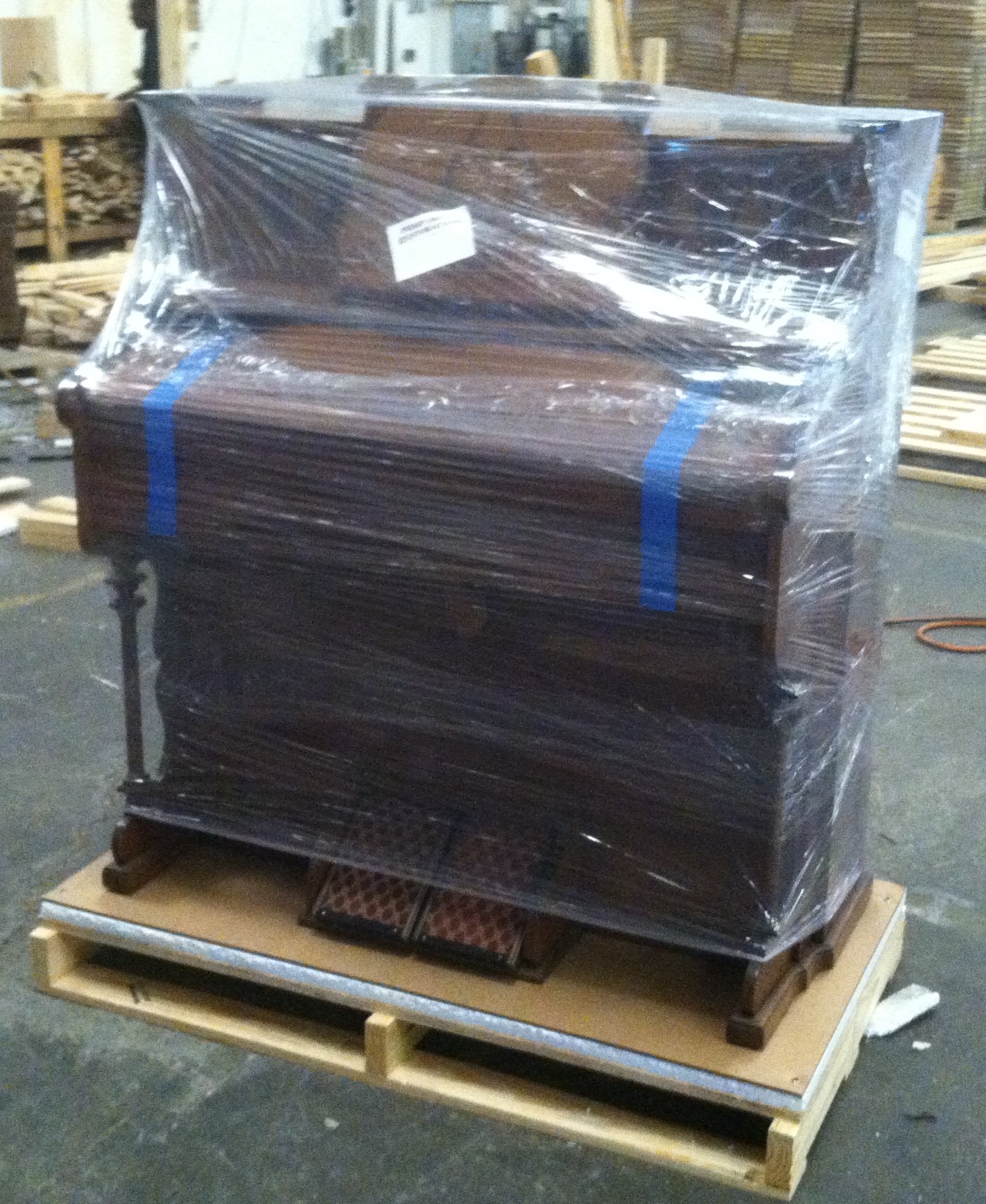|
Antique Organs |
Antique Organs |
Tuning the ReedsThe speed at which the brass reed tongue vibrates determents the pitch the note produce. A reed should be removed for tuning. True, you can tune it when it's inside the organ, but it's a lot easier and safer doing it outside. The reed can be tuned to its octave, i.e., in other words, if you're tuning Middle C, you can tune it to either Tenor C or Treble C. You can also tune it to another reed in a different rank. It's also a good idea to tune the reed to another reed in a different octave. In other words, a 4ft C should not be tuned to another 4ft C. It's important to give special care to the reeds, as the metal is often quite brittle and the tongues can easily snap.
A jeweler's file is usually the best way to scrape off a small amount of brass from the reed tongue. If a reed's tone is flat (a lower pitch) you'll need to quicken the vibration speed. To do this, carefully scrape a very small amount of metal from the reed tongue at point A. On the other hand, if the reed is sharp (a higher pitch) you'll need to slow the vibrating speed down. To do this, you carefully scrape a very small amount of metal from the reed at point B. Unfortunately, this process is a matter of trial and error. Scrape a small amount of metal from the tongue, replace it and test its tuning. You may need to scrape off a little more metal, or if you have tuned the reed too sharp or too flat, you will need to scrape the other end. Tuning SoftwareFor several years now I've been using some software called TuneLab. It was actually designed for piano tuning, but works just fine for pump organs. You can simply load it to your laptop and you're in business. Robert Scott is the software designer and knows his stuff. Of course you'll need to pay Robert something before you can download it. |
Click Here & Email Me Your Questions
Learn more about the Customer's Restoration Photo Album CD!
(click picture to view)
See my crate building process for shipping restored organs

KI4LUK
Pump Organ Restorations
Rod Fudge, Owner and Technician
www.pumporganrestorations.com
All content Copyright © 2009-2023 Pump Organ Restorations · All Rights Reserved · Site Map
Hosted by Bluehost


